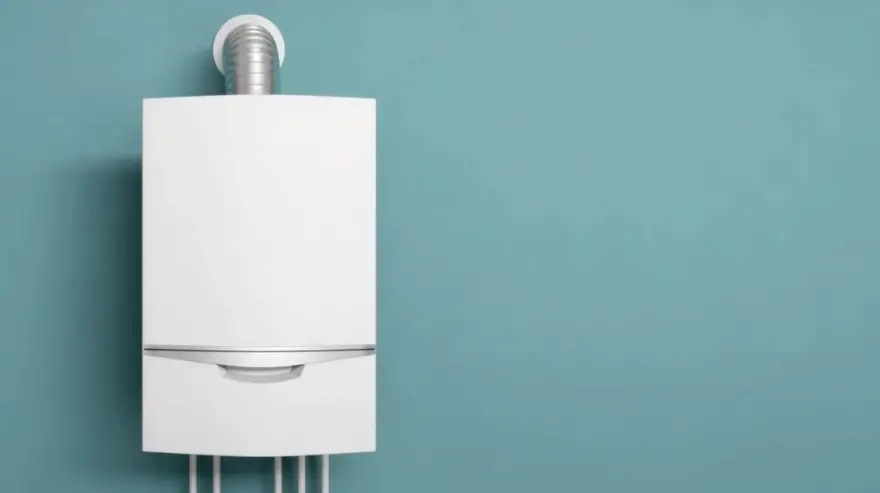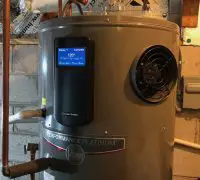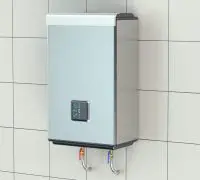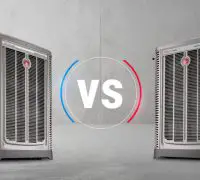If you're looking to fix or replace your Heating or A/C system, we can connect you with a reliable and cost-effective professional in your area.
Should you conclude that a traditional tank-style water heater doesn’t work for your household anymore, the tankless water heaters are a sure option to try. Not only that, they give hot water on demand endlessly, but they also cut down your utility bills and eliminate the standby energy losses. In addition, they’re compact and small, saving storage space and lasting for decades with proper maintenance and cleaning.
One challenge when selecting a tankless water heater is knowing the size of the unit to match your household’s needs. When the water heater is too small, the whole investment ends up being useless, whereas a tank that is too big may cost you too much in the long run.
Page Table of Contents
What’s the know when sizing the tankless water heater?
Briefly put, the maximum output water flow rate at a certain temperature rise rate the tankless water heaters. There are two aspects to consider when selecting the size of your tankless unit:
- How many gallons per minute of hot water you need at peak consumption. With tankless water heaters, there are no tanks, as they only give hot water when you need it.
- The needed temperature rise results from the difference between the groundwater temperature and the output water temperature.
If the needed hot water demand is higher than the maximum output of your tankless unit, your unit may throttle the flow automatically. You will notice less hot water at all outlets and a drop for both the temperature and the pressure.
It’s not a drama when you choose a unit that surpasses your needs. You only pay more upfront.
Is GPM so important when sizing your tankless water heater?
You should start by identifying the peak hot water demand in your home. There are plenty of charts online to help, listing the typical flow rate of various kinds of water outlets in the U.S. you only need to know which appliances you want to run at the same time and the number, adding up the flow rates afterward.
Just to give you an example, you may want to use one shower and one kitchen faucet simultaneously. Here’s the maximum water flow:
2.5GPM+2.2GPM=4.7GPM
It’s not all you need to consider, so keep reading for some tips:
- Is the unit going to sustain the whole house or only a part of it?
- You need to count the number of bathrooms, but also the number of people living in your home. Two people may use two showers simultaneously, but your house could have four bathrooms.
- When you’re thinking about the maximum demand at peak hours (the morning, for instance), you will enjoy hot water ready at any given time. Planning is proper because it also gives you a reality check so that you may reduce the peak demand by a lot.
- You should install some low-flow aerators/fixtures for lowering the flow rates
- The flow rates you find online include both the hot and the cold water. When you shower with a 2.5GPM showerhead, not all water will be hot. Nine times out of ten, you will have some cold water, too, rending the actual hot water demand to be lower.
- Older fixtures typically have higher flow rates
- It’s challenging to take the flow rates of washing machines and dishwashers into consideration. The flow rate may range from 1.5GPM to 2 or even 3GPM. For better accuracy, you can run every appliance separately and check the water meter, while keeping an eye on the time. You will have a general idea of the flow you need.
Side note: For more reliable measurement of the peak water flow, you may grab a 1-gallon bucket and see how long does the shower head/bathroom tap/kitchen faucet needs to fill it. Here’s the formula to use for finding out the flow rate for every appliance:
Flow rare=60/seconds required for filling a bucket.
Does the temperature rise matter?
It’s mandatory that you have an accurate idea of the required temperature rise. It’s not difficult to find it out. Subtracting the temp of the incoming water from the desired output water temperature will give you the temperature rise:
Output water temp- Feed water temp= required temp rise
Now, you also have to identify the temperature of the feedwater, for which you have to ways to do it:
- Use a thermometer
- Take a look at the U.S. average groundwater temperature map. Be aware that there are average temperature estimates, as real temps may vary from one season to another.
If you live in a warm climate, the groundwater temperature is higher, up to 77F degrees in southern Florida. On the other hand, in Alaska and cold regions, the temperature for groundwater can go as low as 37F degrees.
In Florida, a tankless water heater won’t have to struggle to heat the water, since the temperature rise is less than 40F degrees (110-77= 33). On the other hand, a tankless water heater would have to work harder since the temperature rise is higher (110-37= 73F degrees). And when a tankless water heater works harder, the performance and durability will suffer too.
To sum it all up…
Once you know the hot water demand at peak hours and the needed temperature rise, it’s easier to identify the size for your tankless water heater. You just need some time and patience and take a look at the models out there to see which one fits your demands the best way.
All reputed manufacturers offer to size charts with the products but also state the maximum flow rates at a specific temperature rise and the other way around. Some manufacturers may even give you the flow rates for various input/output water temps.
Even if oversizing isn’t as tragic as under-sizing your tankless water heaters, you should get the perfect size for your household’s needs.
And remember to be wise and take the information with a grain of salt. The chance for manufacturers to exaggerate when it comes to the performance of the units isn’t null. Always do your bits and bobs and check the reviews of customers. They should know better…
We can definitely connect you with a trusted provider in your area to repair, replace or maintain your heating and A/C systems. Why not let us find a professional for you?






